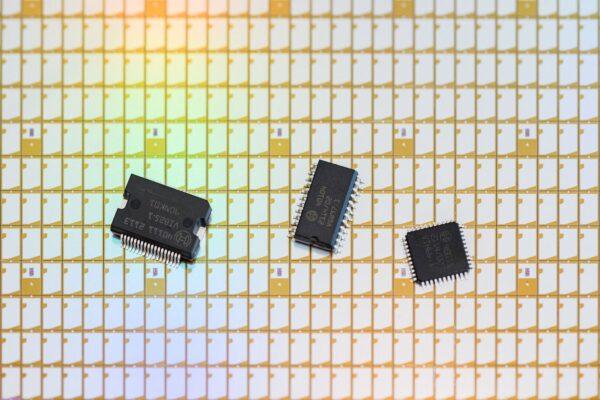Through various investments, Commerce Secretary Gina Raimondo hopes the United States can become a global leader in the microchip industry.
U.S. Commerce Secretary Gina Raimondo believes America could become a key player in the global microchip industry by the decade’s end.
“The brutal fact is, the United States cannot lead the world as a technology and innovation leader on such a shaky foundation,” she said.
“We need to make these chips in America. We need more talent development in America. We need more research and development in America and just a lot more manufacturing at scale.”
Signed into law by President Joe Biden in 2022, the CHIPS and Science Act authorizes about $280 billion in new funding to boost domestic research and manufacturing of semiconductors across the broader United States. Semiconductors, also known as integrated circuits or microchips, are made from pure elements, typically silicon or germanium.
“Everybody here knows what a big deal semiconductors are. Everything is powered by semiconductors—windshield wipers, phones, pacemakers, pretty much every piece of military equipment,” Ms. Raimondo said.
“They’re everywhere, in everything fundamental to our lives—from the moment you wake up in the morning until the moment you go to bed,” she added.
At the moment, according to the secretary, local production of the semiconductors is zero. However, the United States hopes to cement its lead in the chip industry, especially for microchips required to develop artificial intelligence (AI). The United States is a leader in chip design and the development of AI language models. Still, none of the advanced chips needed to fuel AI are made or packed on American soil.
“It takes tens of thousands of leading-edge semiconductor chips to train a single large language model,” she said.
Sooner Rather than Later
According to Ms. Raimondo, the federal government has received over 600 proposals from semiconductor companies interested in receiving grants but a “significant majority” will not receive funding. She says the department is prioritizing projects that will be operational by 2030.
“We’ve decided to prioritize projects that will be operational by 2030. I want to be clear: there are many worthy proposals that we’ve received with plans to come online after 2030, and we’re saying no, for now, to those projects because we want to maximize our impact in this decade,” she said.
“It’s not responsible to give money to a project that will come online, you know, 10 or 12 years from now if it means saying no to excellent projects that could come online this year,” the secretary added.
Ms. Raimondo also revealed that most semiconductor companies seeking government subsidies won’t be getting anywhere near the amounts they have been asking for. She said leading-edge microchip manufacturing companies had requested more than $70 billion but the department has now engaged in tough ongoing negotiations with individual companies because, at this stage, only $28 billion is on the table.
“I tell them you will be lucky to get half of that,” she said.
“When they come in to finalize a deal, where they get less than half of what they wanted and they tell me they are not feeling lucky. That’s the reality. We have to be tough with companies.”
US Could Soon House Entire Microchip Supply Chain
As a result of only investing in projects with a shorter turnaround time, Ms. Raimondo thinks America “can become the home to the entire silicon supply chain for the production of these leading-edge chips from polysilicon production to wafer manufacturing, to fabrication, to advanced packaging.”
“That’s the game, by the way. When I say, let’s be bold, this is not build a few new fabs and call it a day. No. Soup to nuts,” she said.
“Polysilicon to advanced packaging everything in between, including R&D, in the United States,” the head of commerce added.

“We cannot allow ourselves to be overly reliant on one part of the world for the most important piece of hardware in the 21st Century. That’s way riskier,” Secretary Raimondo said.
The Tech Race
Late last year, the Biden administration expanded its restrictions on semiconductor exports to China, seeking to slow the communist regime’s development of advanced military tech.
The new rules limit the types of advanced semiconductors that U.S. firms can sell to China. U.S. companies must notify the government or get a license to export advanced semiconductor chips or the machinery needed to manufacture them.
Original News Source Link – Epoch Times
Running For Office? Conservative Campaign Consulting – Election Day Strategies!


